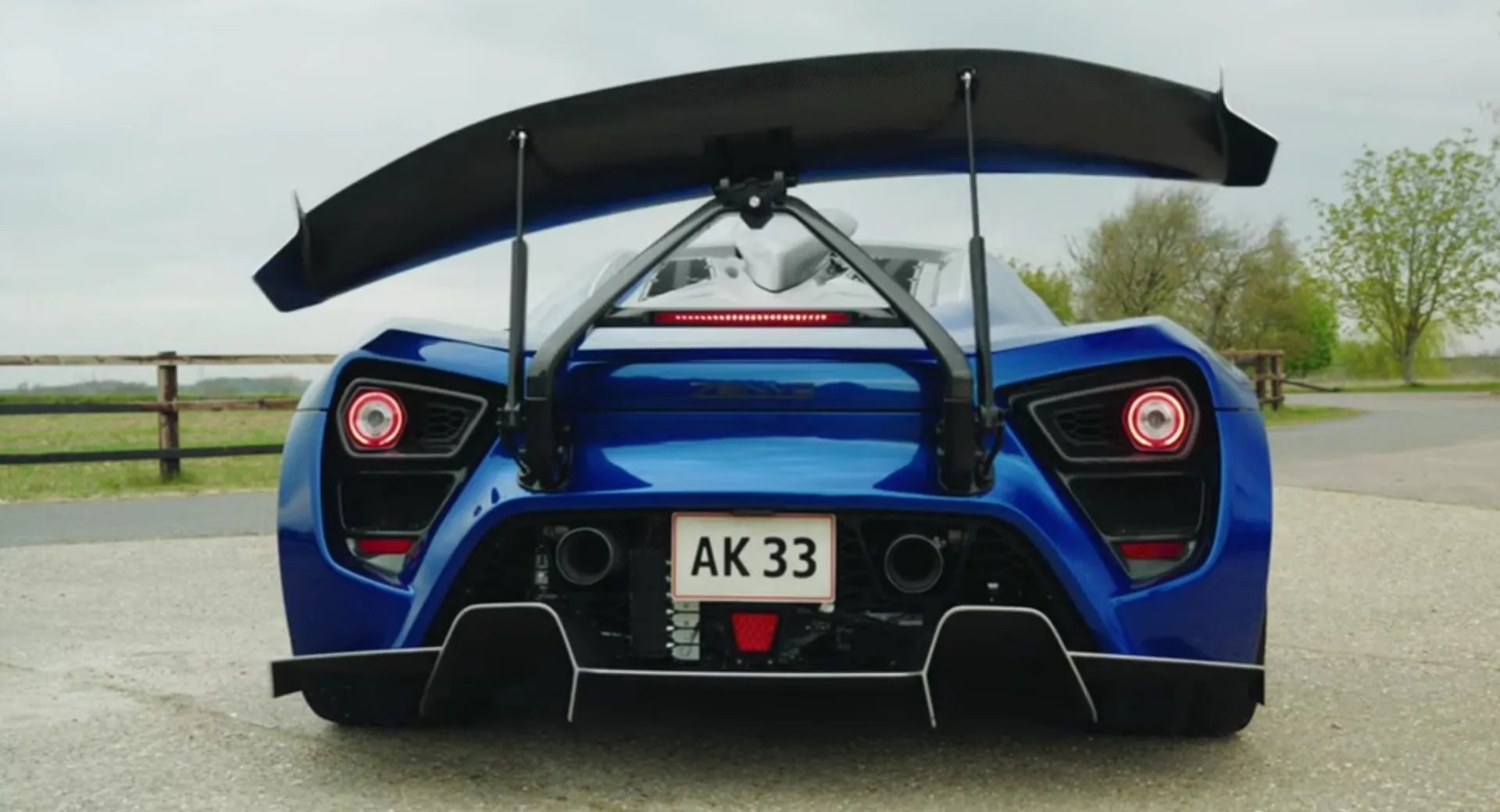¿Funciona realmente el ala batiente del Zenvo TSR-S de 1,8 millones de dólares? ¿Importa?
4 DE JUNIO DE 2021
La industria automovilística danesa no es exactamente enorme, pero eso no ha impedido que los científicos locos de Zenvo intenten enfrentarse a los mejores hipercoches del mundo con un esfuerzo propio: el TSR-S.
Con precios que comienzan en 1,45 millones de euros (1,77 millones de dólares) y un motor V8 de 5,8 litros con doble sobrealimentación fabricado internamente que puede llegar a 60 mph en 2,8 segundos,
sin duda tiene los números necesarios. en el establecimiento de hipercoches. Pero los ridículamente adinerados están bien atendidos en estos días. ¿Cómo haces una marca?
Para Zenvo, su táctica de atención es un "ala centrípeta". Las alas grandes han fascinado durante mucho tiempo, por lo que la compañía decidió dar un paso más y agregar dos actuadores hidráulicos y un par de bisagras al alerón trasero del automóvil para que se mueva mientras conduce. La idea es que al inclinar el ala hasta 20 grados, puede mover la fuerza aerodinámica de lado a lado y aumentar el agarre en las curvas.

De todos modos, esa es la teoría, pero Marshall Pruett de
Road & Track argumentó en 2018 que el ala flappy podría hacer más daño que bien.
El escepticismo de Pruett se debió al hecho de que simplemente agregar más carga aerodinámica en una esquina de un automóvil no es suficiente para que se maneje mejor. Un automóvil se parece mucho a una patineta y si pones todo tu peso en la parte trasera, las ruedas delanteras se levantan y subviramos.
En este video de Carfection, el anfitrión Henry Catchpole cita a
Zenvo, que dice que el movimiento del ala de un lado a otro reduce la carga aerodinámica general en un 3%, pero mueve la fuerza de un lado a otro hasta en un 30%. Esencialmente, su argumento es que no está agregando más peso a la parte posterior de la patineta, solo cambiando donde se presiona el peso que ya está allí.
Es posible que eso no resuelva la preocupación de Pruett sobre las ruedas delanteras (específicamente la que cruza el automóvil en diagonal, que puede comenzar a perder agarre), pero es un dato divertido para contarle a sus amigos cuando vean su Zenvo por primera vez.
Si un ex ingeniero de autos de carrera está satisfecho o no con la física detrás del alerón, puede ser irrelevante. Desde detrás del volante, Catchpole informa que
el Zenvo es un automóvil bastante bien ordenado para la carretera (aunque con un poco de subviraje, aunque eso se siente intencional y tranquilizador), y parece más emocionado por la ridiculez del ala que desanimado por su eficacia cuestionable.
Y tal vez ese sea
el truco más inteligente
del Zenvo . La lógica detrás de su ala es lo suficientemente caricaturesca como para tener sentido para algo comúnmente conocido como hipercoche. Toda la industria es tonta. ¿Por qué no tener un ala tonta?
Does The $1.8M Zenvo TSR-S’s Flapping Wing Actually Work? Does It Matter?
JUNE 4, 2021
The Danish car industry isn’t exactly enormous, but that hasn’t stopped the mad scientists at Zenvo from trying to take on the world’s best hypercars with an effort of its own: the TSR-S.
With prices starting at €1.45 million ($1.77 million USD) and pumping out 1,177 hp from a twin-supercharged 5.8-liter V8 made in-house that can get it to 60 mph in a claimed 2.8 seconds,
it certainly has the numbers to take on the hypercar establishment. But the ridiculously well-heeled are well-catered to these days. How do you make a mark?
For Zenvo, its gambit for attention is a “centripetal wing.” Big wings have long fascinated, so the company decided to take it a step further and add two hydraulic actuators and a couple of hinges to the car’s rear wing so that it flaps around while you’re driving. The idea is that by tilting the wing by up to 20 degrees, it can move downforce from side to side and increase cornering grip.
That’s the theory anyway, but
Road & Track‘s Marshall Pruett argued in 2018 that the flappy wing could do more harm than good.
Pruett’s skepticism stemmed from the fact that simply adding more downforce at one corner of a car isn’t enough to make it handle better. A car is a lot like a skateboard and if you put all your weight on the back then the front wheels lift and you get understeer.
In this video from Carfection, host Henry Catchpole quotes
Zenvo which says that the wing moving from side to side reduces overall downforce by 3%, but moves the force from side to side by up to 30%. Essentially, their argument is that it isn’t adding more weight to the back of the skateboard, just changing where the weight that’s already there is pressed.
That may not address Pruett’s concern about the front wheels (specifically the one across the car diagonally, which may start losing grip), but is a fun fact to tell your friends when they see your Zenvo for the first time.
Whether or not a former race car engineer is satisfied with the physics behind the wing may be beside the point. From behind the wheel, Catchpole reports that
the Zenvo is a pretty well-sorted car for the road (albeit one with a bit of understeer, though that feels intentional and reassuring), and seems more thrilled by the wing’s ridiculousness than put off by its questionable effectiveness.
And maybe that’s
the Zenvo‘s cleverest trick. The logic behind its wing is just cartoonish enough that it makes sense for something commonly referred to as a hypercar. The whole industry is silly. Why not have a silly wing?




















